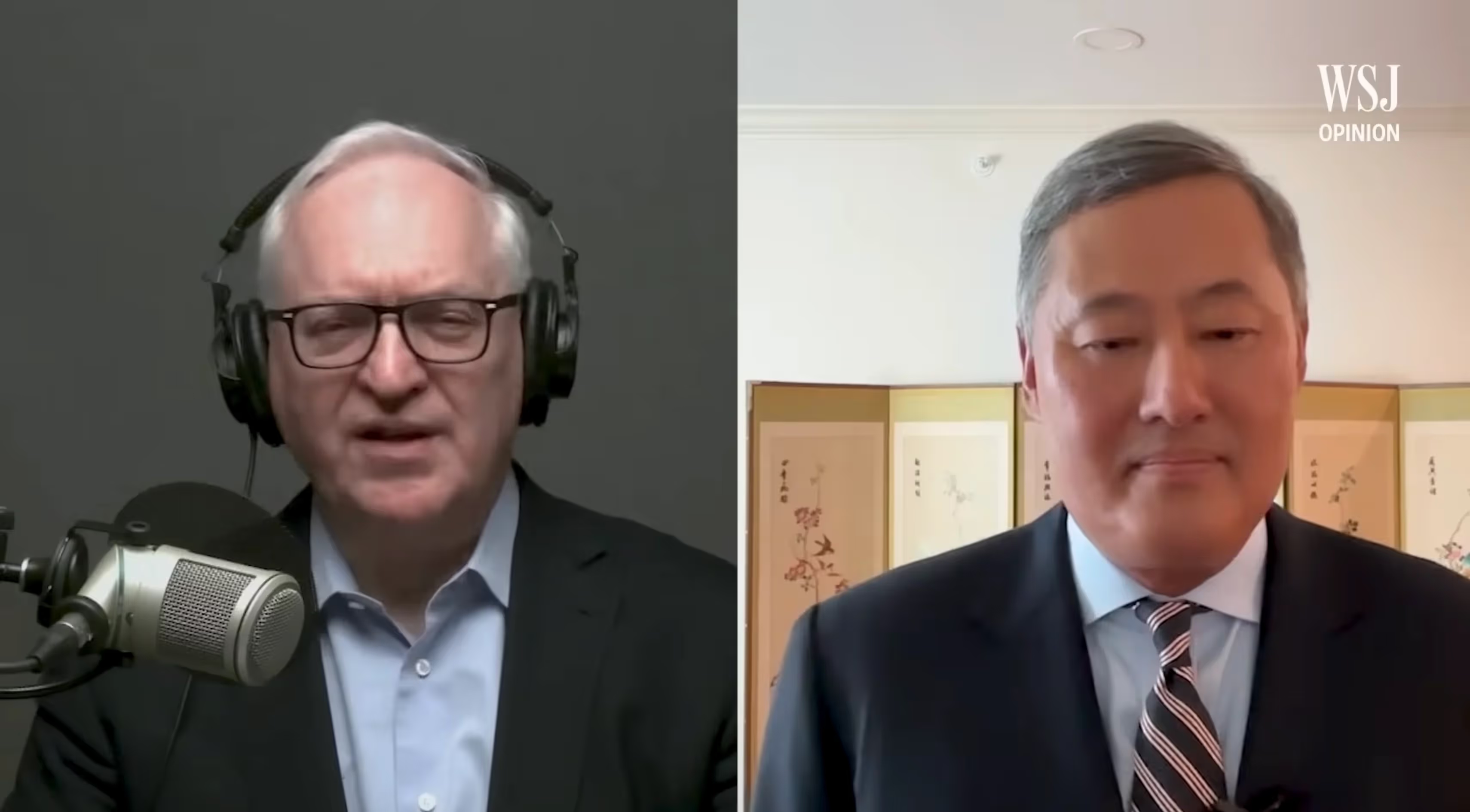
Rise of the Silicon Valley Patriots?
The best national security approach for America is robust capitalism and all the energy, creativity, and prosperity that it produces.
In The Technological Republic: Hard Power, Soft Belief, and the Future of the West (Crown Currency, 2025), Alexander C. Karp and Nicholas W. Zamiska warn that there must be a robust collaboration between Silicon Valley and the federal government to defeat America’s enemies in the future. They explain that a creative and productive relationship between the two is a vital component needed to restore America’s national edge in the coming and current conflicts with China, Russia, and other wayward nations. Both authors are at Palantir, a firm known for specializing in big data analytics. Alex Karp is the co-founder and CEO of Palantir, and Nicholas Zamiska, is the head of corporate affairs and legal counsel to the CEO.
America should return to the tradition of close collaboration between the technology industry and the government, they write, because “this new era of advanced AI, … provides our geopolitical opponents with the most compelling opportunity since the last world war to challenge our global standing….” Karp and Zamiska note that such a necessary public-private partnership is being prevented by left-liberalism and all of its puniness, guilt, inwardness, and lawlessness, which has fostered a lack of belief in national spirit and culture by the current business and engineering class in Silicon Valley.
To support their single overarching argument, the authors fuse three separate problems in The Technological Republic: market-capitalism, political, and cultural problems, which are all somehow best demonstrated by the refusal of our most advanced engineers and tech companies to design and construct the technology that our great republic requires to hold back or defeat its enemies. Why all of this is needed to support the authors’ ultimate argument that America is in grave danger because its tech elites and the federal government aren’t working together to build AI and other tech weapons needed to beat our enemies is not exactly clear.
The market problem is marked by Silicon Valley’s participation in what Karp and Zamiska describe as “late-capitalism,” a term the authors don’t so much define but gesture at in the book. The leaders of Silicon Valley no longer see America as their country, whose development and security might require their talents and effort. My take is that the authors see late capitalism as a problem of weak, satiated, last-men souls in Nietzsche’s famous description, and the hollowed-out republic that coddles, no, rewards them. Silicon Valley’s choice to participate in late capitalism is marked by its insular turn towards consumers and profits, using its rare talents to invest in and build exclusively the numerous apps and programs for personal use. There is no pursuit of scientific advancement needed to strengthen America against its enemies. Many would call this capitalism and separate it from meeting national security objectives. But Karp and Zamiska observe that none of these actions is heroic or dedicated to reinvigorating the American nation and helping it surmount the challenges of this century. Silicon Valley stands distant and aloof, in the authors’ estimation, from inventing, producing, and meeting the future military technological needs of the American republic.
The period of supposed “late capitalism” that the authors critique, during which Silicon Valley companies experienced rapid growth, was also made possible by market-friendly policy amendments. Is this something to be dismissed? Federal policy changes in the late 1970s and continuing into the Reagan presidency halved the capital gains tax rate, clarified intellectual property rights, and permitted pension investments in companies with risk levels similar to those of many Silicon Valley companies. This capital explosion made venture capital a new force in American capitalism. Similarly, professors and investors with tech creations and ideas that were languishing suddenly gained the confidence to develop them with the IP amendments of the late 1970s. But this process of commercial growth also sharpens our understanding of how we evaluate the Karp and Zamiska public-private argument.
The political problem in America is seen in the sheer lack of patriotism in America’s elites in virtually every vocation; even our political leaders aren’t sure if America is lovable, the authors observe in various ways. To reconstitute “a technological republic” demands sterner stuff, what that actual stuff is, we are never fully told, but it will require “a reassertion of national culture and values—and indeed of collective identity and purpose—without which the gains and benefits of the scientific and engineering breakthroughs of the current age” will be only for a “secluded elite.”
The third problem is a cultural one, evidenced by the hollowness of modern liberalism and a deforming education system. America’s key educational institutions and its larger cultural resources, even religion, no longer call American citizens to ascend higher than their own selfish or inward pursuits. The results are evident in a republic that squanders its technological lead, wields a military that no longer plans and innovates for the next war, and has an education system incapable of leading its brightest students to read and think at the highest levels, instead immersing them in identity and grievances. The authors quote leading communitarian thinker Michael Sandel, who emphasizes the importance of community and civic virtue, on what happens in a culture where “discourse lacks moral resonance.”
The authors note that the members of such a culture do not cease demanding a “public life of larger meanings,” but that, devoid of leadership by an educated class who believe in the culture, history, and politics of a free people, such yearnings inherently find “undesirable expressions.” Man will have meaning, come hell or high water. The “void” created by our culture is “haunting and fearsome.” Of course, the one moral meaning that America’s elites tried to impose was a national repudiation of American history, politics, economics, and religion, leading us to bear shame and endlessly apologize for past national sins, which were also our personal sins. But that moral lesson didn’t take.
The book’s argument that gatekeepers in American politics and culture have dismissed national political meaning to the long-term detriment of republican government certainly resonates. The authors are spot on in their description of how a politics devoted to autonomous rights and a permissive egalitarian culture, where virtue and vice carry no meaning, has displaced the republican government of a free people, where collective judgments and demands are made regarding what national political life requires of them. The authors state that being an American is now an empty existence, but a “thicker conception of belonging” needs “a story of what the American project has been, is, and will be—what it means to participate in this wild and rich experiment in building a republic.” They note that America has been in retreat since the “end of the 1970s” as “an entire generation had grown skeptical of broader national identity.”
The authors never explore why many Americans, including both progressives and conservatives, turned against national projects. Silicon Valley, the authors observe, was mostly founded by the 1970s generation. These founders focused the computing revolution on the individual consumer, showing disinterest “in furthering the misadventures of a government whose entire project and reason for being” was no longer accepted by their cohort. But why did this generation’s scientific and political leaders turn against national projects? One explanation is that these national projects were viewed as inefficient failures and deeply corrupt. Americans in the 1970s and 1980s, both conservatives and progressives, concluded for separate reasons that many national projects no longer made sense to them.
Conservatives concluded that the federal bureaucracy had grown beyond the control of political actors and was now its own branch of government, one not exactly contained by the rule of law. Much of Nixon’s presidency was about finding such limits over the administrative state, and he failed. The fiscal and regulatory policy built on the managed capitalism ethos of the New Deal and subsequent policies was correctly judged a failure. The lessons conservatives would draw from this, as the 1970s unfolded and stagnation and defeatism gripped the country, were the need for economic growth, among other things, and they elected Ronald Reagan to do that.
While progressive presidents and congresses launched a variety of national projects across the twentieth century, it was President Johnson’s Great Society and the Vietnam War that undid his presidency. These policies strangely launched a countercultural left that looked upon America with a certain contempt. This new left viewed Vietnam as a reprehensible failure. America’s efforts against communism overall were misguided. Besides, what did a country as morally corrupt as America think it was doing with an aggressive foreign policy against Soviet communism. In addition, from the perspective of the new left, the Great Society’s attempts to heal the effects of racism, provide more welfare programs, and promote greater self-consciousness only further underscored in their mind how far America fell short and earned their ire.
These lessons need to be told to underscore the fraught nature of any attempt to create national community and spirit through federal policies, but not to summarily dismiss the need for a national coalescing around significant policy objectives, and to say nothing of the need for the American people to want to remain a republican constitutional people. Moreover, one notes that the dysfunction of our national politics stems largely from the failure of progressive philosophy and policy. Americans are not destined to remain a free people if they refuse to maintain a national ethos and spirit, and prove themselves incapable of engaging in the national projects that must be undertaken to protect our republic.
One doesn’t doubt the need for a new version of Silicon Valley—federal government partnerships to invest in blue-sky technology that could prove militarily beneficial, to say nothing of providing a base for future commercial opportunities. It is hard to disagree with the authors’ judgment on this point. Furthermore, as Karp and Zamiska note, this happened in the 1940s and 1950s between early companies in Silicon Valley and the federal government, and it did prove beneficial to America’s military in their efforts against the might of the Soviet Union, as we rapidly outpaced their military technologically in the late 1970s and 1980s.
Historian Margaret O’Mara captures this relationship well in her commercial history of Silicon Valley titled The Code: Silicon Valley and the Remaking of America (Penguin Press, 2019). But her history of how Santa Clara Valley became Silicon Valley emphasizes that the research in computer technology, digital technology, transistors, electronics, microchips, integrated circuits, and later microprocessors, and communications devices was conducted by entrepreneurs and engineers funded by the government. All of the actors matter when we think about the incredible technological progress that emerged from Northern California. Crucially, while the government was willing to fund basic research to win the Cold War, there was no master plan by the government or Silicon Valley companies. Karp and Zamiska seem to have a central plan in mind, one that patriotic people in government and tech need to execute. Perhaps the reality here is much more interesting and unpredictable than any top-down plan?
In The Code, O’Mara explains that neither the government, nor many of the companies, had a specific plan or understanding of what they were going to produce, or that the technology would become suitable for military use and later adaptable for tremendous commercial gain. What O’Mara nicely captures, is that government and startups, including Stanford University, found ways to work together and develop new technology in the discovery process. The government doesn’t just give funding for research. These products are produced thanks to an indefinable quality of human talent and agency at work, both from the government and from the private sector. And it’s those qualities and characteristics that emerge in the culture of Silicon Valley that make it distinctive. The opportunities for commercial markets require further creation and development of the technology by entrepreneurial talent. Enter Steve Jobs, and before him, eminences like Dave Packard, the founder of Hewlett-Packard.
Karp and Zamiska dismiss too quickly, and many of us are too willing to accept their negative characterization of Silicon Valley in recent decades. We’ve lived through tech company speech codes, the cancel culture they have inflicted on users, and their nearly universal alignment with the progressive left, where the line between the government and these companies seem to vanish. These companies also seem to have learned from much of this folly. However, in the same period of “late-capitalism”, their contributions to the economy still have been revolutionary for individuals, a fact that Karp and Zamiska downplay.
Perhaps the best national security approach for America is robust capitalism and all the energy, creativity, and prosperity that it produces. In that regard, the best preparation for dealing with known and unknown military challenges that America will face in the years and decades ahead is that we should preserve and further refine the rules that govern our capital, intellectual property, and technological markets to ensure maximum commercial activity. National security requires ensuring that our forces are utilizing the most sophisticated technology, and at times, investment in early technological forms that have no market and thus are blue-sky. But the risks remain. If we attempt to turn Silicon Valley into just an outpost of Washington DC funding streams, then not only could we lose its commercial ingenuity, but we might also lose whatever ability it does possess to help the government win the wars of tomorrow.
Richard M. Reinsch II is the editor-in-chief of Civitas Outlook.
Politics
.webp)
Liberal Democracy Reexamined: Leo Strauss on Alexis de Tocqueville
This article explores Leo Strauss’s thoughts on Alexis de Tocqueville in his 1954 “Natural Right” course transcript.
%20(1).avif)
Long Distance Migration as a Two-Step Sorting Process: The Resettlement of Californians in Texas
Here we press the question of whether the well-documented stream of migrants relocating from California to Texas has been sufficient to alter the political complexion of the destination state.
%20(3).avif)
Who's That Knocking? A Study of the Strategic Choices Facing Large-Scale Grassroots Canvassing Efforts
Although there is a consensus that personalized forms of campaign outreach are more likely to be effective at either mobilizing or even persuading voters, there remains uncertainty about how campaigns should implement get-out-the-vote (GOTV) programs, especially at a truly expansive scale.

California job cuts will hurt Gavin Newsom’s White House run
California Governor Gavin Newsom loves to describe his state as “an economic powerhouse”. Yet he’s far more reluctant to acknowledge its dramatically worsening employment picture.

An anti-woke counter-revolution is sweeping through the media
From Hollywood to the newsroom, the hegemony of the ‘progressives’ is finally faltering.

What Adam Smith’s Justice Teaches Us About Stealing Benefits
There is a constant tension in liberal systems between the shared trust necessary for the system's survival and the use of public entitlements paid for at public expense.

Indiana, D.C., and Purchased Submission
The clear lesson for all Americans is this: Allowing federal transfers into your state also means giving DC a say in state and local issues.




%20(1).jpg)









